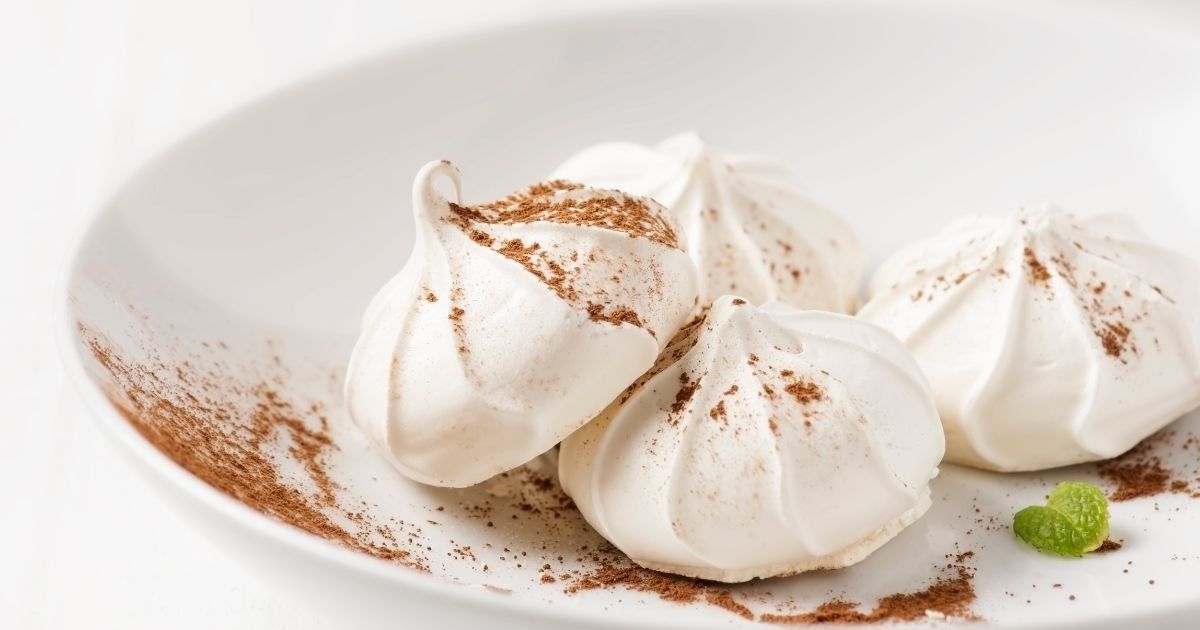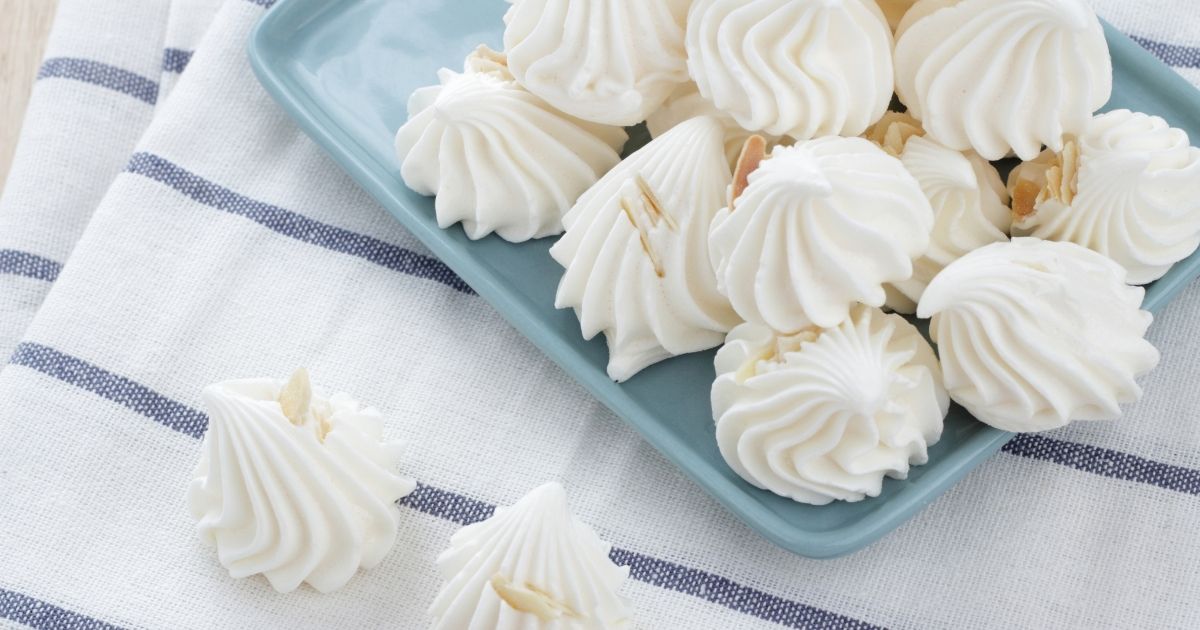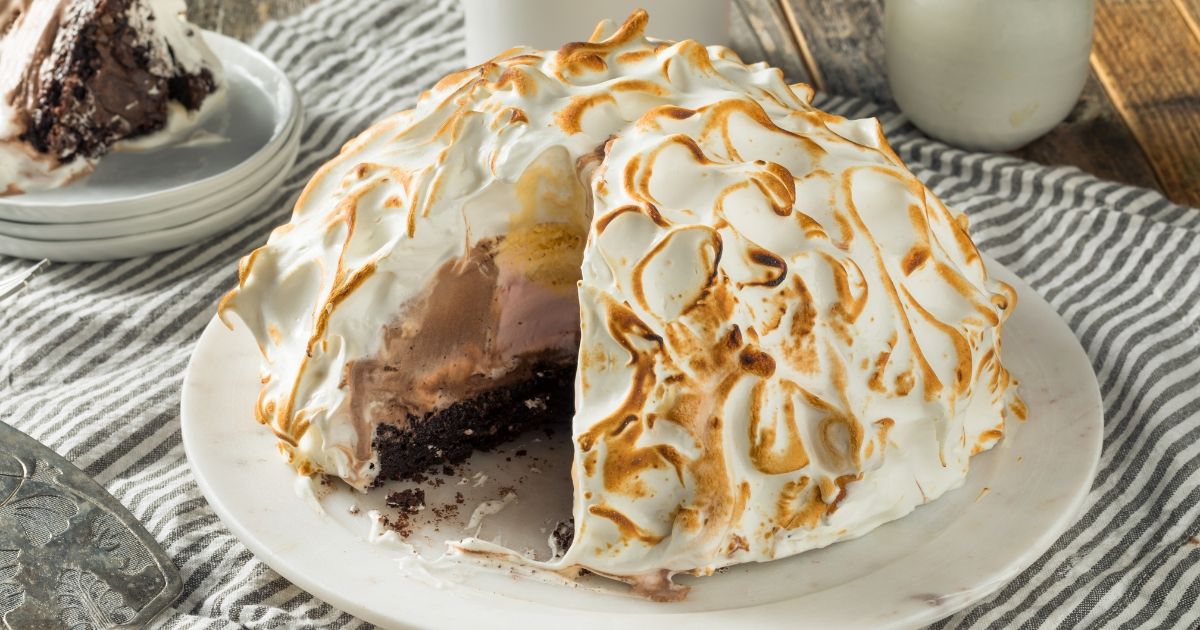Mastering Meringue: A Step-by-Step Guide to Perfect Peaks
Unlock the secrets to making flawless meringue every time. Dive into our comprehensive guide on achieving those perfect, glossy peaks.
Meringue is a magical concoction. From just a few humble ingredients, you can create a light, airy, and glossy mixture that graces pies, cookies, and other desserts. When done right, it's a heavenly addition to your sweet treats. However, making the perfect meringue can sometimes seem like a daunting task, especially for beginners. Let’s unravel the mystery behind those stiff peaks and ensure your meringue-making endeavors are always a success.
Understanding Meringue
At its core, meringue is a mixture of whipped egg whites and sugar. The process of whipping introduces air, while sugar stabilizes the foam, giving meringue its signature texture. There are three main types of meringue: French (or common), Italian, and Swiss. Each has its unique method and application, but for this guide, we'll focus on the classic and most straightforward – the French meringue.
Ingredients You'll Need:
- Fresh egg whites: 4
- Fine sugar: 1 cup
- Cream of tartar: 1/4 teaspoon (optional, but helps stabilize the meringue)
- Vanilla extract: 1/2 teaspoon (optional for flavor)
Step-by-Step Guide:
Prepare Your Workspace:
- Ensure that all your equipment (bowls, whisks) is clean and dry. Any residue or moisture can prevent the egg whites from whipping properly.
- Separate your egg whites, making sure no yolks mix in. It's best to do this when the eggs are cold, but allow the whites to reach room temperature before whipping for optimal volume.
Start Whipping:
- Begin whipping the egg whites on a low speed until they become frothy.
- Add the cream of tartar (if using).
Gradually Add Sugar:
- Once the egg whites are frothy and have soft peaks, start adding sugar. Do this gradually, about a tablespoon at a time, while continually whipping.
Achieve Stiff Peaks:
- Continue whipping until the meringue forms stiff, glossy peaks. You should be able to hold the bowl upside down without the meringue moving.
- Add vanilla extract for flavoring, if desired.
Use Immediately:
- Once achieved, your meringue is ready for use. Dollop onto pies, spread over tarts, or bake into meringue cookies.
Tips for the Perfect Meringue:
- Always use fresh eggs. They whip up better and provide a more stable meringue.
- Gradually adding sugar ensures it dissolves entirely into the egg whites, giving your meringue a glossy finish.
- Overbeating can cause the meringue to become grainy or leak in the oven. Once you have stiff peaks, stop whipping.
- For a more stable meringue, you can use a pinch of salt or a drop of lemon juice as alternatives to cream of tartar.
The Origin of Meringue
The origin of meringue dates back centuries, with both the Swiss and the French staking a claim. The term "meringue" is believed to have derived from the Swiss town of Meiringen. However, it was popularized and refined by French chefs, becoming a beloved staple in many classical desserts, from the delicate "macaron" to the sumptuous "Lemon Meringue Pie".
The beauty of meringue isn't just its taste or texture but its versatility. For those keen to experiment, the Italian meringue involves boiling sugar syrup, and Swiss meringue requires heating over a bain-marie. These variations, especially the Italian, are excellent for frostings as they're more stable due to the cooking process.
Whether you’re looking to top a pie, create ethereal cookies, or venture into making the perfect macaron, meringue is a skill worth mastering. With our guide on making the perfect French meringue, you're well on your way to becoming a meringue maestro!
With the tools and knowledge provided in this guide, your next meringue will not only be the talk of the party but will also showcase your evolving skills as a home baker. Embrace the process, and remember: every glossy peak in your meringue is a testament to your dedication and precision. Happy baking!
Different Types Of Meringue
Meringues, though simple in their primary ingredients, can be categorized into several types based on their method of preparation and specific uses. Here are the main types of meringue:
French Meringue:
- Description: This is the most common and straightforward type of meringue. Egg whites are beaten until they form soft peaks, and then sugar is gradually added until the mixture is stiff and glossy.
- Usage: Often used for meringue cookies, pies, and some cakes. It's also piped into various shapes and baked to form decorative elements.
- Cooking: Baked in the oven until dry and crisp.
Italian Meringue:
- Description: Made by boiling a sugar syrup and then gradually beating it into whipped egg whites. This creates a very stable, glossy, and smooth meringue.
- Usage: Frequently used in buttercream frostings, mousse, and as a topping for some desserts. It's also the base for many Italian desserts and pastries.
- Cooking: The hot sugar syrup cooks the egg whites, making it safe to eat without further baking, although it's sometimes lightly torched for a caramelized finish.
Swiss Meringue:
- Description: Egg whites and sugar are combined and then heated over a double boiler (bain-marie) while whisking continuously. Once the mixture reaches a certain temperature and the sugar has dissolved, it's removed from the heat and whipped until stiff and cool.
- Usage: Used for buttercream, as a dessert topping, or baked into meringue nests or other shapes.
- Cooking: The double boiling process cooks the eggs, making the meringue safe to eat. It can be further baked if required for the specific dish.
Vegan Meringue:
- Description: Instead of using egg whites, this meringue utilizes the liquid from a can of chickpeas, known as aquafaba. The aquafaba is whipped with sugar in a manner similar to traditional meringue techniques.
- Usage: An egg-free alternative for vegan desserts, toppings, and other meringue applications.
- Cooking: Can be baked or torched, depending on the recipe.
Each type of meringue has its unique characteristics and is best suited for specific culinary applications. When selecting a meringue type for a dish, it's essential to consider the texture, stability, and cooking method needed for the final product.
How To Use Meringue?
Meringue, with its light, airy texture and sweet flavor, is incredibly versatile in the world of desserts. Here are various ways to use meringue, depending on its type and your desired outcome:
Pies and Tarts:
- Lemon Meringue Pie: This is perhaps the most famous meringue dessert. The tartness of the lemon curd filling is beautifully balanced by the sweet, fluffy meringue topping.
- Other Fruit Pies: Meringue can be used as a topping for many fruit-filled pies, not just lemon. Think about raspberry, passion fruit, or rhubarb for unique flavor combinations.
Meringue Cookies:
- Whip French meringue to stiff peaks, incorporate flavors or mix-ins if desired, then pipe or spoon small dollops onto a baking sheet and bake at a low temperature until crisp.
- This is a meringue-based dessert named after the Russian ballet dancer Anna Pavlova. The outside is crisp while the inside remains soft and marshmallow-like. It's typically topped with whipped cream and fresh fruits.
- A layer of cake is topped with ice cream and then entirely covered with meringue. The entire dessert is then briefly baked to brown the meringue while keeping the inside cold.
Meringue Nests:
- Pipe Swiss or French meringue into hollow nest shapes and bake. Once cool, these can be filled with fruits, whipped cream, or custards.
Mousse and Buttercream:
- Italian meringue can be used as a base to create light mousses or combined with butter to make silky meringue-based buttercream for cakes and cupcakes.
Eton Mess:
- A British dessert made by breaking up meringue cookies and mixing them with whipped cream and strawberries.
Floating Islands (Îles Flottantes):
- Soft poached meringues (usually French meringue) floating on crème anglaise, often drizzled with caramel.
- It is meringue spread with a filling, such as whipped cream and berries, then rolled up and sliced.
- A French cookie made from a meringue mixture combined with almond flour. Two cookies sandwich a filling, such as buttercream, ganache, or jam.
Toppings:
- Use meringue as a decorative topping for cakes, cupcakes, brownies, or other desserts, either piped in beautiful designs or simply spread. It can be torched for a caramelized finish.
- Use aquafaba (the liquid from canned chickpeas) to make vegan meringue. This can be utilized in many of the ways traditional meringue is used, making vegan versions of classic desserts.
When using meringue, especially as a topping, it's essential to ensure that it's appropriately sealed around the edges to prevent shrinkage. Also, when baking, it's crucial to keep the temperature low to avoid burning or over-browning. Remember, meringue is a delicate ingredient, so treat it with care to achieve the best results.
What Is The Process Of Making Meringue?
Making meringue involves a process of whipping egg whites and sugar together until they form glossy, stiff peaks. Here's a simplified step-by-step process for creating a classic French meringue:
Preparation:
- Ensure all equipment (mixing bowl, beaters or whisk) is clean, dry, and free from any grease.
- Separate egg whites from the yolks. It's easier to do this while the eggs are cold, but the whites whip better when they're at room temperature.
Start Whipping Egg Whites:
- Place the egg whites in the mixing bowl.
- Begin whipping on a low speed until the egg whites become frothy.
Add Stabilizer (Optional but recommended for stability):
- At the frothy stage, you can add a stabilizing agent like cream of tartar, a pinch of salt, or a drop of lemon juice. This helps the egg whites maintain their structure.
Gradually Add Sugar:
- Once the egg whites reach soft peaks (peaks that flop over when the whisk is lifted), begin adding sugar gradually, about a tablespoon at a time.
- Continue whipping after each addition until the sugar dissolves.
Achieve Stiff Peaks:
- Whip the mixture until you achieve stiff, glossy peaks. This means when you lift the whisk, the peaks stand straight up without collapsing. The meringue should feel smooth between your fingers, indicating the sugar has completely dissolved.
Add Flavoring (Optional):
- If desired, you can gently fold in flavorings like vanilla extract at this stage.
Use the Meringue:
- Depending on your recipe, you can then either bake the meringue or use it as a topping or component in other dishes.
It's important to note that meringue is sensitive to moisture and fat. Even a tiny amount of yolk or grease can prevent the whites from whipping properly. Ensure your utensils are clean, and be careful when separating the eggs.
What 2 Ingredients Are Meringues Made From?
Meringues are primarily made from two essential ingredients:
- Egg whites
- Sugar
These two ingredients are whipped together until they reach the desired consistency, whether soft or stiff peaks. The amount of sugar, whipping time, and any additional ingredients or techniques can vary depending on the type of meringue being made (e.g., French, Italian, or Swiss meringue).
More Meringue Recipes
Baked Alaska
Baked Alaska, also known as omelet norvegienne, omelet surprise, or omelet siberienne in different parts of the world is a delicious old-school dessert...
Vanilla Macaron
After you make this easy French macaron recipe, you’ll not even want to think about other Macaron recipes. Serve these delicious macarons as a snack...
Vegan Buttercream Frosting
Are you a vegan with a love for all things sweet? Or perhaps you're simply on the hunt for a dairy-free frosting that doesn't compromise on taste or texture....
Pavlova
Would you like to surprise guests and households by making an elegant and easy cake for tea? So, you must try Pavlova cake. Pavlova dessert is a divine...
Tres Leches Cake
Indulge in the decadence of the Tres Leches Cake, a classic Latin American dessert that will leave your taste buds dancing. This sponge cake is soaked...


































